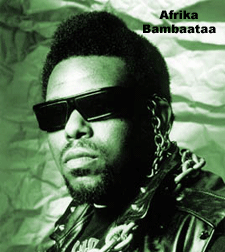
Professor Rick Vincent-author of History of Funk drops a lot of insight about the musical legacy of Michael Jackson and his brothers
Michael Jackson and the Jackson 5 are considered stellar musicians and entertainers who changed the game in major ways. Oftentimes when we speak of them they are presented as if they came out of nowhere and their musical prowess came out of a vacuum. We wanted to give people some deeper insight into their music and what it meant to Soul, Funk and the Black community.
We sat down with Professor Ricky Vincent aka the Uhuru Maggot, author of the landmark book The History of Funk. We sat down and walked through the history of MJ and the Jacksons and talked in-depth about their influences ranging from James Brown to Stevie Wonder. We talked in-depth about their roots including how MJ and his brothers grew up in Gary, Indiana. We talked about the important role Gary played in Black America, both in terms of having one of the country’s first African-American mayors and the 1972 meeting by Black folks to set a nationwide agenda.
We talked about their father Joe Jackson and who he is and how he spent a lot of childhood and teenage years in Oakland, California. Vincent talked about the vibrant blues scene that was in full gear when Joe Jackson was around in West Oakland and how that may have been a foundation for his musical ambitions.
We spoke about Michael Jackson and his dancing history. We talked about his signature moves ‘The Robot’, The Moonwalk and locking and noted how these were popular dance styles well-known in various hoods throughout California for years prior to Michael introducing them to the rest of the world.
 We talked about the struggles the group had when MJ’s voice changed and how Motown executives wanted them to follow a particular pop formula while the group pushed to establish a new sound that was more soulful, funky and contemporary. Eventually the tension became so great that the group left Motown and joined Epic. Because Motown owned the name The Jackson 5, the group changed their name to The Jacksons. Complicating their situation even more was the fact that older brother Jermaine married Berry Gordy’s daughter hence he went on to stay at Motown and do a solo career.
We talked about the struggles the group had when MJ’s voice changed and how Motown executives wanted them to follow a particular pop formula while the group pushed to establish a new sound that was more soulful, funky and contemporary. Eventually the tension became so great that the group left Motown and joined Epic. Because Motown owned the name The Jackson 5, the group changed their name to The Jacksons. Complicating their situation even more was the fact that older brother Jermaine married Berry Gordy’s daughter hence he went on to stay at Motown and do a solo career.
We talk about the influence James Brown had on Michael and how he went out and pretty much adopted much of Brown’s delivery, showmanship and overall style. We explore the music from that time period in the mid 70s and note how the group found themselves under the gun as they tried to keep up with icons like Stevie Wonder, George Clinton, Sly Stone, BT Express and an array of ‘child groups like the Sylvers who had busted on the scene and were hitting hard.
Ricky reminded us of how George Clinton and his p-funk mob were in Detroit recording songs and that their style and influence was definitely felt. because he was connecting with the hood, the Jacksons were forced to step it up and become a little more raw with their music.
We end this segment by highlighting the various musical directions the group took.
Rickey Vincent Speaks on Michael Jackson pt1
Rickey Vincent Speaks on Michael Jackson pt2

Chuck D spoke about Michael Jackson’s political side and how he influenced his love for Hip Hop
In pt 2 we are joined by Chuck D of Public Enemy where we have an in-depth discussion about MJ and his politics and how Chuck was introduced to Hip Hop via Mike.
Chuck talks about the important role legendary songwriters Gamble & Huff played in pushing Mike and his brothers. Author Ricky Vincent talks about how the message in the music is part of a much larger tradition within Black music.
Chuck D also talks about how some of Michael Jackson’s records which were used as breakbeats influenced him and made him embrace Hip hop more. In particular is the vintage cut ‘Music’s Taking Over’. Chuck also talks about the sample they used from MJ in the song By The Time I get to Arizona.
Chuck also talks about the important influence Michael Jackson had in the realm of videos.
We play lots of Jackson’s political songs as well as the cuts that inspired Chuck D.
We conclude the interview by talking about MJs War with Sony Music and Tommy Mottola, his charitable works and the importance of being named the King of Pop.
Chuck D speaks on Michael Jackson





















 Much of it centered around artists like George Clinton, Bootsy Collins George Duke and Roger & Zapp to name a few. Simply put, brothers out west brought p-funk to the hip hop round table.
Much of it centered around artists like George Clinton, Bootsy Collins George Duke and Roger & Zapp to name a few. Simply put, brothers out west brought p-funk to the hip hop round table.



 Shock G pointed that funk was heavy all around the country except New York where he spent a lot of time growing up. He went on to explain that there were two things going on in New York City..”First of all, disco had taken off in a big way and hip hop was starting to become big among the younger people. The result of this activity was that New York missed out on the P-funk”.
Shock G pointed that funk was heavy all around the country except New York where he spent a lot of time growing up. He went on to explain that there were two things going on in New York City..”First of all, disco had taken off in a big way and hip hop was starting to become big among the younger people. The result of this activity was that New York missed out on the P-funk”. OGs of the Bay Area hip hop scene will recall that C-Funk an East Palo Alto native started out with the name Captain Crunch, but a certain cereal company came forth with some court orders forcing him to change. However, C-Funk along with his partner Mozilla the Funk Dragon have definitely made some noise around town.
OGs of the Bay Area hip hop scene will recall that C-Funk an East Palo Alto native started out with the name Captain Crunch, but a certain cereal company came forth with some court orders forcing him to change. However, C-Funk along with his partner Mozilla the Funk Dragon have definitely made some noise around town. the Black Panther of hip hop, CEO of Scarface Records and producers for the hit group Conscious Daughters , is himself no stranger to the funk. On his last album… ‘
the Black Panther of hip hop, CEO of Scarface Records and producers for the hit group Conscious Daughters , is himself no stranger to the funk. On his last album… ‘

 En Vogue producers Foster & McElroy, George Clinton collaborator and long time funkateer Dave Kaos and SF rap start JT The Bigga Figga. All have come to the hip hop roundtable with funk in their back pocket.
En Vogue producers Foster & McElroy, George Clinton collaborator and long time funkateer Dave Kaos and SF rap start JT The Bigga Figga. All have come to the hip hop roundtable with funk in their back pocket.